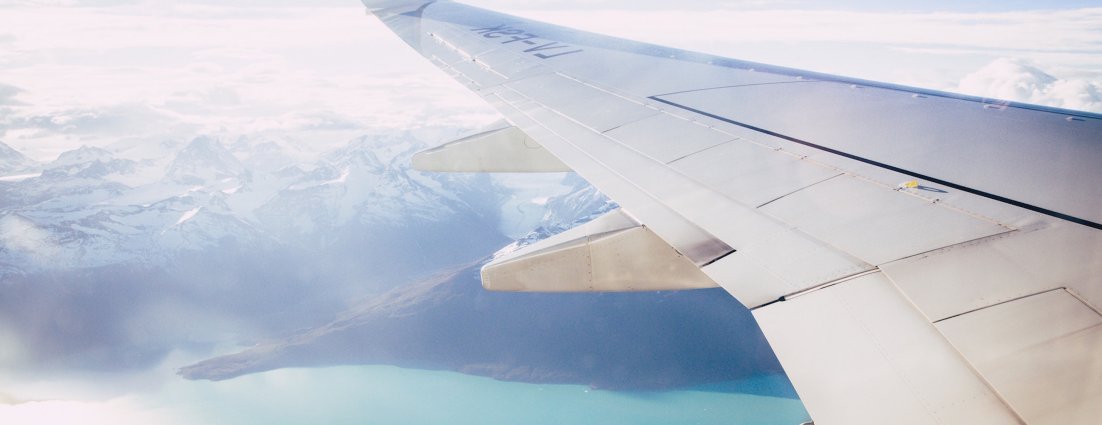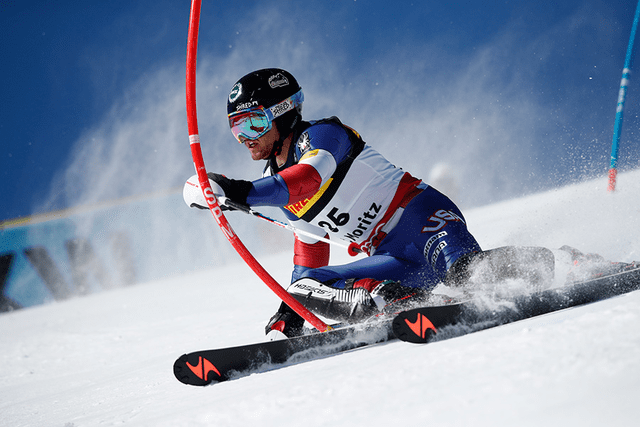Five Tips for Budget Friendly Ski Travel
09.18.2017 | Ski Racing Staff

In the sport of alpine ski racing, governing your funds can be a challenging practice. Between dialing in your equipment, finding a training venue, investing in a season pass, and paying for all the race entry fees throughout the winter, the cost can easily become overwhelming.
This is most evident for ski racers when catching a flight to some far away snowy destination (cough-cough NASTAR Nationals for you east coasters). Flying is hardly ever inexpensive, and with pricey baggage regulations you might end up paying much more in total than you originally anticipated.
That said, here are some quick travel tips to keep in mind before you board that next plane for training or racing.
5. Be Flexible
With the advent of websites such as Kayak.com and Google Flights, it is easy to predict which travel days will be best when purchasing an airline ticket. With Kayak you can simply select the drop-down calendar where the cheapest days to fly are highlighted in green while Google Flights lists all the ticket prices on the calendar itself. This is an incredibly useful tool as tickets can be hundreds of dollars more expensive from one day to the next.
If you do not have a specific schedule for your trip, I recommend organizing travel around the cheapest days. Even if you are constricted by rigid dates, be creative. I recently purchased a ticket to Denver arriving one day earlier than needed, but a friend’s couch and an extra day on the rental car makes a lot more sense than spending an extra $300 to fly 24 hours later.
If you are feeling particularly ambitious, try purchasing one-way tickets. Prices fluctuate constantly and you might just get lucky. I used this method traveling to Norway for a month this fall and ended up getting a round-trip ticket for just over $300. But remember, it is a gamble that could end up going the wrong way. However, if you are flexible in where you need to be and you are not satisfied with the price you are given, wait out the return flight.
4. Pack Light
This is the biggest mistake I see when traveling with large groups. I personally have made this blunder on multiple occasions. Baggage regulations are quite strict and only getting stricter. If you weigh in around 52 pounds per bag, you might get away with it but anything more than 55 pounds and you are liable to start doling out extra cash at the check-in counter. Depending on the airline, overweight baggage can cost the offender around $100.
There are a few ways you can limit the excess. The first is to only bring the essentials. You don’t need a full wardrobe on the road. Travel in a nice outfit, and pack some sweats. When you are on a training or racing trip, most athletes wear base layers and ski clothes the majority of the time anyway.
Are you traveling with your family or friends? Eliminate redundancies such as vices and irons which are heavy and bulky. If your ski bag is overweight, consider leaving a pair of bindings at home and switching the ones you bring to your other skis when you change disciplines. I have even gone so far as to take the plates off of my skis and only travel with one set. It is probably not worth the trouble, but it did save me a few bucks on the road.
3. Rent Cheap
If booking a rental car is in your designs, then I suggest finding the cheapest one out there. If you are alone or your numbers are limited, that will probably be a Chevy Spark or some other tiny toy car that will just fit your GS skis with a little imagination. If you can squeeze in all your luggage and everyone has a seat, then the cheaper daily rate will make that expenditure much more manageable.
If you are traveling with a large group, then look up Rent-A-Wreck which deals in previously owned cars for lower rates while also catering to drivers under the age of 25. They are usually reliable, but the last Rent-A-Wreck I was in had a knife hidden in the dashboard so the jury is still out!
2. Always Deal With A Human
If purchasing your airline ticket online, you will sometimes have the option to prepay for baggage or purchase in-flight meals. Never prepay for anything! Pay as little as you have to in order to reserve your seat and then deal with the extraneous details later. True, there is not much you can do to get around paying the standard $25 first bag and $35 second bag fee for flying these days, but maybe when you get to the airport the computers will be down and you won’t have to pay for baggage. (It’s happened.) Maybe the airline employees will be in a rush and won’t bother charging you for the second bag. Random chances can happen that might save you money at the end of the day, but you can never get your money back from a computer.
1. The Boot Bag
This is the holy grail of ski travel in my opinion. On all airlines that I know of, the “boot bag” is a free exception item when traveling with skis. If you read the fine writing the rule stipulates that a boot bag and a ski bag must weigh 50 pounds or less collectively, but few check-in employees are well versed in this. In layman’s terms, it can be construed as a massive backpack which means you get a free bag to pack what you will. Out of the countless times I have used the boot bag exception for items in addition to my boots, I have seen raised eyebrows but received only one firm no.
Credit: Agence Zoom
My teammate Robby Kelley (pictured above at the 2017 International Ski Federation World Ski Championships, and quite possibly the most frugal man I have ever met) travels to Europe for a month with only what he would pack for a normal day of training. Skis, a backpack full of gear, and the sweats he wears. If he could figure out how to do away with his ski bag and carry skis onto the plane with him, I am sure he would.
Kelley has acquired what I believe to be expert status for skier travel where his only luggage includes a small carry-on, ski bag, and a boot bag. The beauty of a boot bag is that even if you get the no-go at the check-in desk, you can always choose to carry it on and check it at the gate for free. If all goes according to plan, you can get on a flight with all your training and racing gear on a domestic flight for the $25 baggage fee which goes a long way to saving those pennies over race season.
Please be aware that these suggestions are personal in nature and may not apply to everyone. Take all that I say with a grain of salt knowing that what worked for me might not always be the smartest way to travel for you.
We live in an expensive world and skiers have it worse than most but with a little inventiveness and some frugality, you can make it much more manageable if not even enjoyable.
